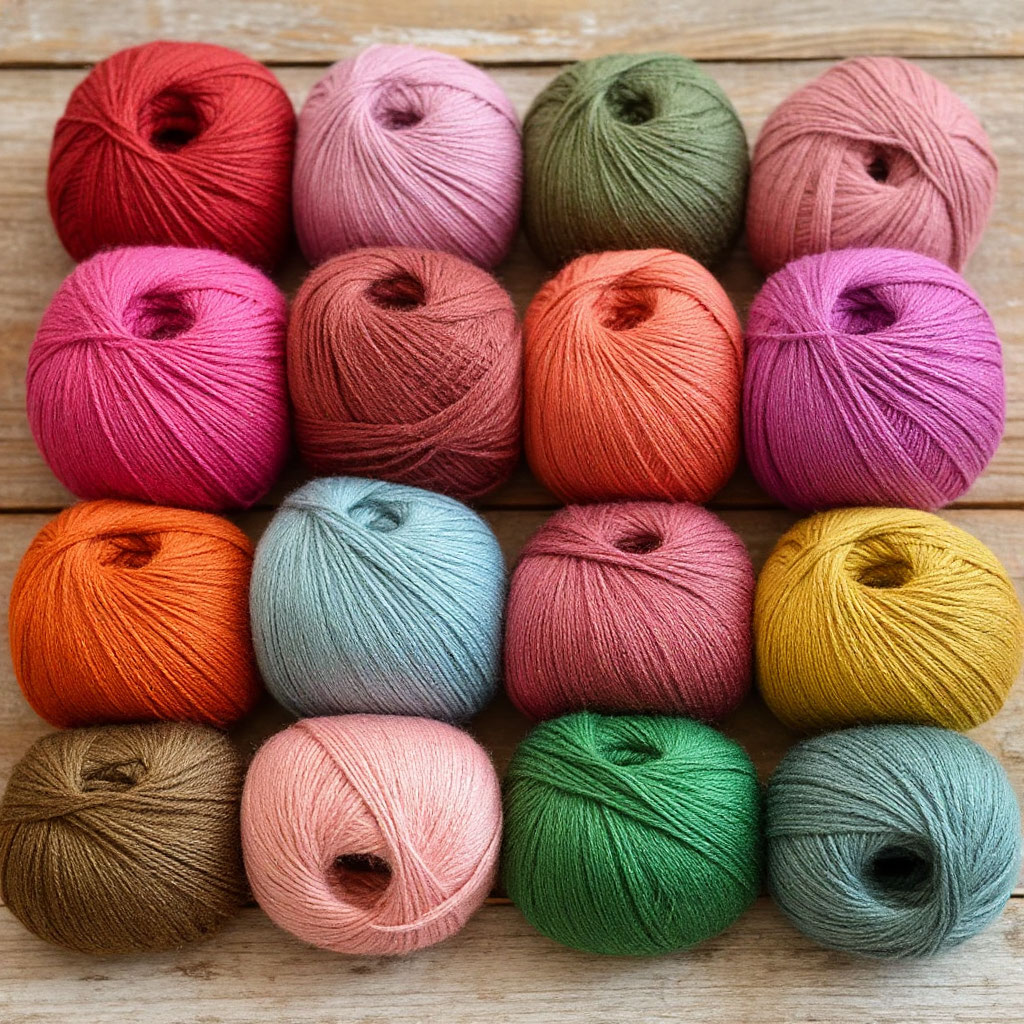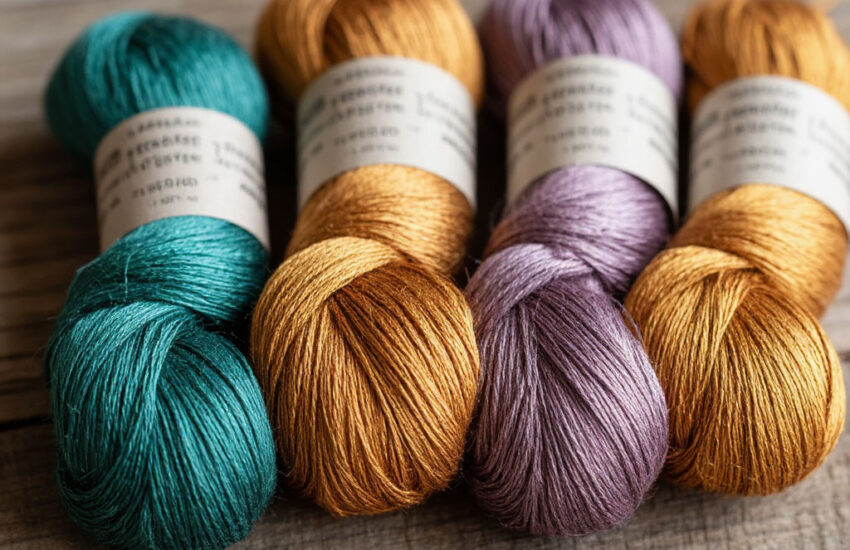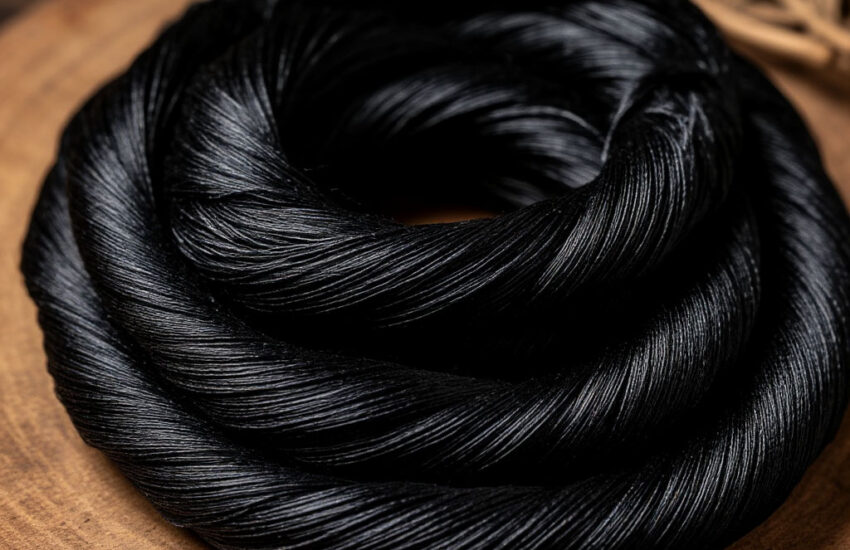Is Bamboo Yarn Really Eco-Friendly? The Truth Behind ‘Green’ Fibers
Contents
- 1 The Truth About Bamboo Yarn’s Sustainability: A Closer Look
- 2 Chemical vs. Mechanical Bamboo Processing
- 3 Eco-Friendly Alternatives to Bamboo Fabric
- 4 How to Choose Truly Sustainable Yarn
- 4.0.1 Understanding Certifications and Standards
- 4.0.2 The Critical Role of Processing Methods
- 4.0.3 Evaluating Fiber Properties and Practicality
- 4.0.4 Conducting a Full Lifecycle Assessment
- 4.0.5 Balancing Budget and Ethics
- 4.0.6 Identifying and Avoiding Greenwashing
- 4.0.7 Building a Sustainable Stash Gradually
- 5 FAQ
- 5.0.1 Is bamboo yarn safe for baby clothes and sensitive skin?
- 5.0.2 Does bamboo yarn shed microplastics in the wash?
- 5.0.3 Can I compost bamboo yarn scraps at home?
- 5.0.4 How do I spot “rayon from bamboo” vs real bamboo linen on U.S. labels?
- 5.0.5 Does buying bamboo yarn hurt pandas or cause deforestation?
Bamboo yarn has been touted as the holy grail of sustainable textiles—soft, breathable, and supposedly gentle on the planet. But how much of this eco-friendly reputation is fact, and how much is clever marketing? For knitters, crocheters, and eco-conscious shoppers trying to make responsible choices, the truth about bamboo yarn sustainability issues might come as an unpleasant surprise.
This deep dive into whether bamboo yarn is truly eco-friendly will separate greenwashing from genuine sustainability. From the chemical-heavy process of turning bamboo into yarn to better biodegradable yarn options, this investigation uncovers what really makes a fiber sustainable—and why some eco-conscious knitting materials aren’t as planet-friendly as they seem. Continue reading to the end of this article for a downloadable checklist that helps you separate true eco-credentials from marketing hype when shopping for bamboo yarn.
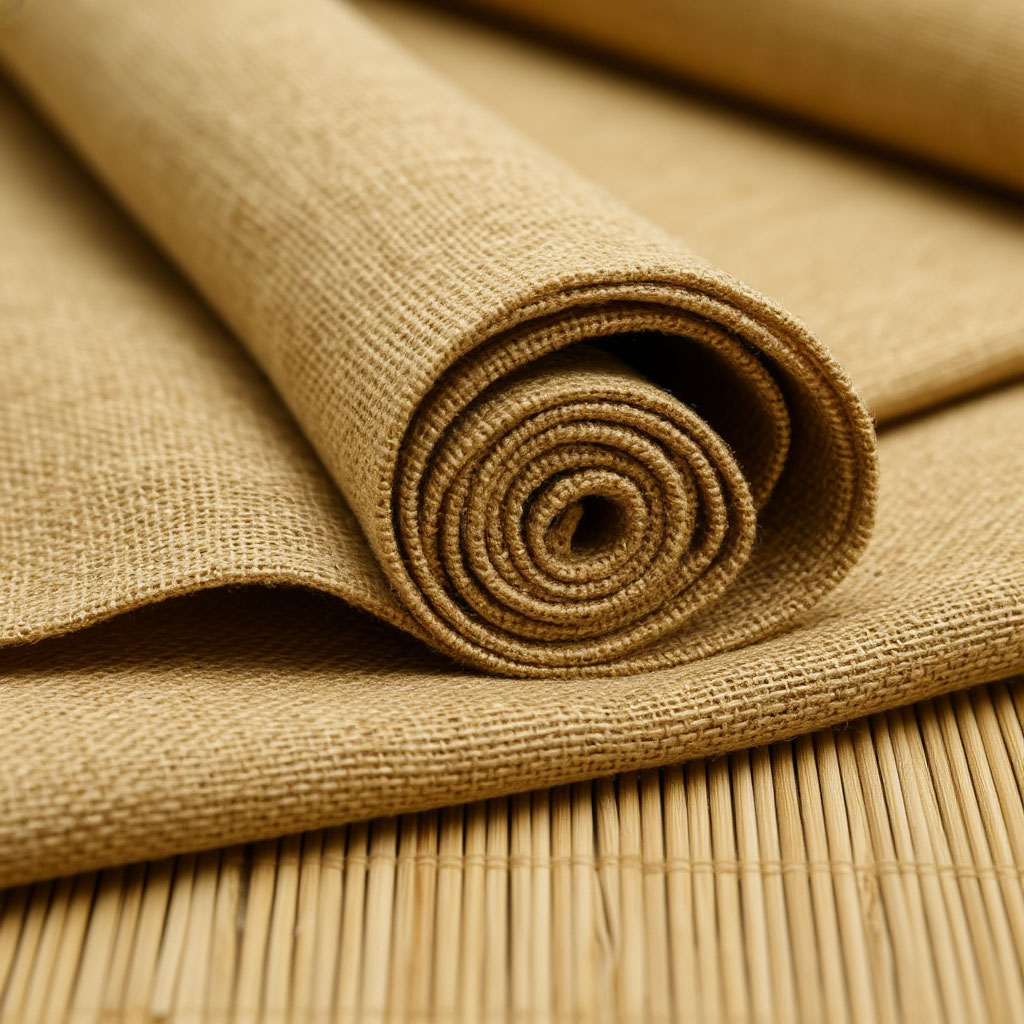
The Truth About Bamboo Yarn’s Sustainability: A Closer Look
At first glance, bamboo checks all the boxes for an environmentally friendly material. It’s one of the fastest-growing plants on Earth, requiring no pesticides and naturally regenerating after harvest. Compared to water-guzzling cotton or synthetic petroleum-based fibers, bamboo seems like a dream come true for eco-conscious knitting materials.
But here’s the catch: bamboo as a plant is sustainable—bamboo as a fabric often is not.
The Dirty Secret of Bamboo Fabric Production
The biggest issue with bamboo yarn sustainability lies in how it’s processed. There are two main methods:
- Chemical Processing (Bamboo Viscose/Rayon) – The most common and problematic.
- Mechanical Processing (Bamboo Linen) – Rare, expensive, but far more eco-friendly.
1. The Chemical Nightmare Behind Bamboo Viscose
Over 90% of bamboo yarn on the market is actually bamboo viscose—a semi-synthetic fiber created through a toxic chemical process. Here’s how it works:
- Bamboo pulp is dissolved in harsh chemicals like sodium hydroxide and carbon disulfide (a known neurotoxin).
- The liquid is then forced through spinnerets to create fibers.
- The fibers are bleached, washed, and spun into yarn.
The problem? These chemicals often end up polluting waterways, harming factory workers, and leaving behind a trail of environmental damage. Despite being derived from a natural plant, the final product is far from natural.
2. The Rare Eco-Friendly Alternative: Mechanical Processing
A small fraction of bamboo yarn is made through mechanical processing, which involves:
- Crushing bamboo stalks and using natural enzymes to break them down.
- Combing and spinning the fibers without synthetic chemicals.
This method produces bamboo linen, a much more sustainable option—but it’s labor-intensive, costly, and hard to find in mainstream yarn stores.
The Greenwashing Problem: Misleading Labels
Many brands market bamboo yarn as “natural,” “organic,” or “biodegradable,” conveniently omitting the toxic chemical process behind it. Unless the label specifies mechanically processed bamboo, chances are it’s chemically produced viscose.
Is Bamboo Yarn Biodegradable? It’s Complicated.
Even though bamboo itself decomposes naturally, chemically processed bamboo yarn may not break down as easily due to residual synthetic compounds. For truly biodegradable yarn options, mechanically processed bamboo is the better choice—but again, it’s rare.
The Bottom Line on Bamboo Yarn Sustainability
- Pros: Fast-growing plant, requires few resources to cultivate.
- Cons: Most bamboo yarn is chemically processed, contributing to pollution and worker harm.
- Verdict: Unless it’s mechanically processed bamboo linen, bamboo yarn’s eco-friendly reputation is largely overstated.
For crafters seeking genuinely sustainable yarn, there are better eco-conscious knitting materials available—ones that don’t rely on toxic manufacturing.

Chemical vs. Mechanical Bamboo Processing
For eco-conscious crafters asking “is bamboo yarn eco-friendly?”, the answer depends entirely on processing methods. The transformation from renewable bamboo plant to soft knitting yarn involves either chemical-intensive or mechanical processes – with dramatically different environmental impacts that raise serious bamboo fabric sustainability issues.
The Harsh Reality of Chemical Processing
Most commercial bamboo yarn undergoes the viscose process, which completely contradicts the eco-conscious knitting materials promise. This method:
- Dissolves bamboo pulp in toxic sodium hydroxide
- Treats it with carcinogenic carbon disulfide
- Generates hazardous wastewater pollution
The resulting bamboo yarn may feel silky, but its production harms both workers and ecosystems. For crafters seeking biodegradable yarn options, chemically processed bamboo fails the sustainability test despite its plant origin.
Mechanical Processing: The Truly Eco-Friendly Alternative
A small fraction of bamboo yarn producers use traditional mechanical methods that show how bamboo is processed into yarn sustainably:
- Crushing stalks with physical pressure
- Using natural enzymes instead of chemicals
- Spinning fibers without synthetic additives
This labor-intensive process creates authentic eco-conscious knitting materials that:
- Retain bamboo’s natural antibacterial properties
- Completely biodegrade after use
- Eliminate chemical pollution risks
Why Chemical Processing Dominates
Despite its environmental costs, chemical processing prevails because:
- It’s 5x faster than mechanical methods
- Produces softer, more commercial fibers
- Costs 60-70% less to manufacture
This economic reality explains why most bamboo fabric sustainability issues get overlooked by mass-market brands.
Identifying Truly Sustainable Bamboo Yarn
To find biodegradable yarn options that match eco-values, look for:
- Oeko-Tex or GOTS certifications
- “Mechanically processed” claims
- Linen-like texture (softer isn’t better)
- Transparent supply chain details
While chemically processed bamboo yarn dominates shelves, informed crafters can still find options that answer “is bamboo yarn eco-friendly?” affirmatively.
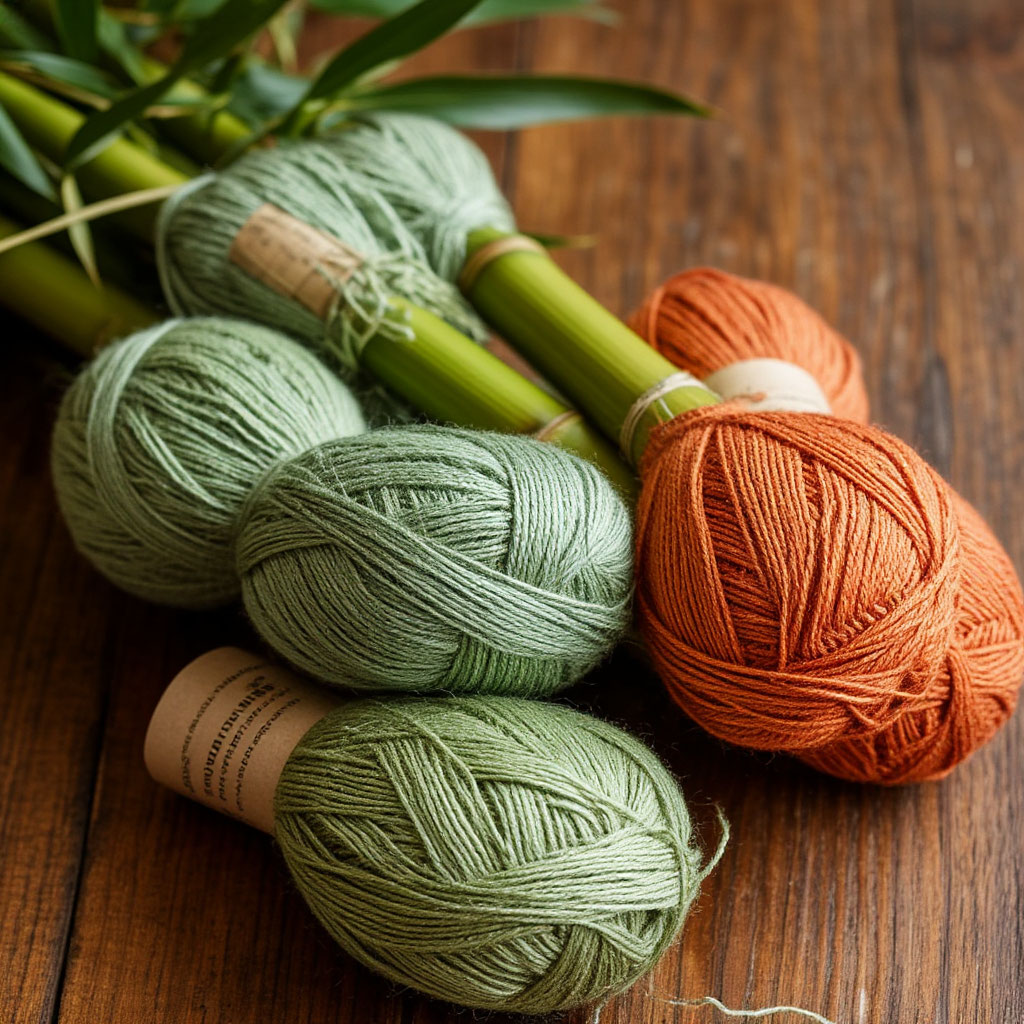
Eco-Friendly Alternatives to Bamboo Fabric
For knitters and crocheters who’ve discovered the bamboo fabric sustainability issues, the search for genuinely eco-conscious knitting materials doesn’t end at rejection—it begins with better alternatives. The textile world offers numerous options that outperform conventional bamboo yarn in both environmental impact and ethical production, answering the crucial question: What should environmentally aware crafters use instead?
Organic Cotton: The Classic Reinvented
When considering biodegradable yarn options, organic cotton stands as a time-tested favorite that’s undergone an eco-makeover. Unlike conventional cotton, the organic version:
- Requires 91% less water than traditional cotton farming
- Uses natural pest control instead of synthetic pesticides
- Maintains soil health through crop rotation
- Carries GOTS (Global Organic Textile Standard) certification in premium forms
The production of organic cotton yarn skips the toxic chemical baths that plague how bamboo is processed into yarn, making it a safer choice for both crafters and farmers. While slightly less silky than bamboo viscose, high-quality organic cotton develops a beautiful drape and softness with washing.
Hemp: The Overlooked Power Fiber
Hemp deserves center stage in any discussion about eco-conscious knitting materials, offering benefits that put even the best bamboo claims to shame:
- Grows in dense quantities (10x more fiber per acre than cotton)
- Naturally resistant to pests, eliminating pesticide needs
- Improves soil quality rather than depleting it
- Produces the strongest natural plant fiber
Modern processing techniques have transformed hemp from rough burlap material into yarns with a lovely linen-like texture perfect for garments that last decades. For crafters concerned about bamboo fabric sustainability issues, hemp provides similar breathability without processing controversies.
Linen: The Time-Tested Performer
Linen, made from flax plants, represents one of humanity’s oldest biodegradable yarn options that remains supremely relevant:
- Requires minimal water compared to cotton
- Thrives in poor soils unsuitable for food crops
- Naturally moth-resistant and antimicrobial
- Becomes softer with each wash while gaining strength
The mechanical retting process used to create linen yarn mirrors the better methods of how bamboo is processed into yarn without chemicals, using natural moisture and microorganisms to separate fibers. Linen’s natural texture makes it ideal for warm-weather projects and heirloom-quality pieces.
Tencel (Lyocell): The Scientific Breakthrough
For those who love bamboo’s drape but want truly eco-conscious knitting materials, Tencel offers a scientifically advanced solution:
- Made from sustainably harvested eucalyptus trees
- Uses a closed-loop solvent system that recycles 99% of chemicals
- Carries EU Ecolabel certification for environmental excellence
- Biodegrades completely in both soil and water
The production process solves the bamboo fabric sustainability issues by maintaining full control over chemical inputs and outputs, resulting in a fiber that’s both luxurious and responsible.
Recycled Fibers: Giving New Life to Existing Materials
The most sustainable yarn is often the one that already exists. Recycled options present innovative biodegradable yarn alternatives by:
- Transforming post-consumer cotton textiles into new yarn
- Repurposing fishing nets and ocean plastics into durable fibers
- Using pre-consumer fabric scraps from garment factories
- Reducing landfill waste with every skein purchased
While not always plant-based, high-quality recycled yarns offer an important solution for crafters prioritizing circular economy principles over virgin materials—even those as renewable as bamboo.
Making the Switch: How to Transition from Bamboo
For crafters accustomed to bamboo’s particular qualities, switching to more eco-conscious knitting materials requires some adjustment:
- Start with blends (organic cotton/hemp or linen/Tencel)
- Experiment with different needle/hook sizes
- Embrace the natural texture of sustainable fibers
- Appreciate the longevity of properly cared-for garments
The market for truly sustainable yarn has expanded dramatically, offering textures and weights to suit every project type—from delicate lace shawls to durable sweaters. By moving beyond the bamboo fabric sustainability issues, crafters can build stashes that align with both their creative visions and environmental values.
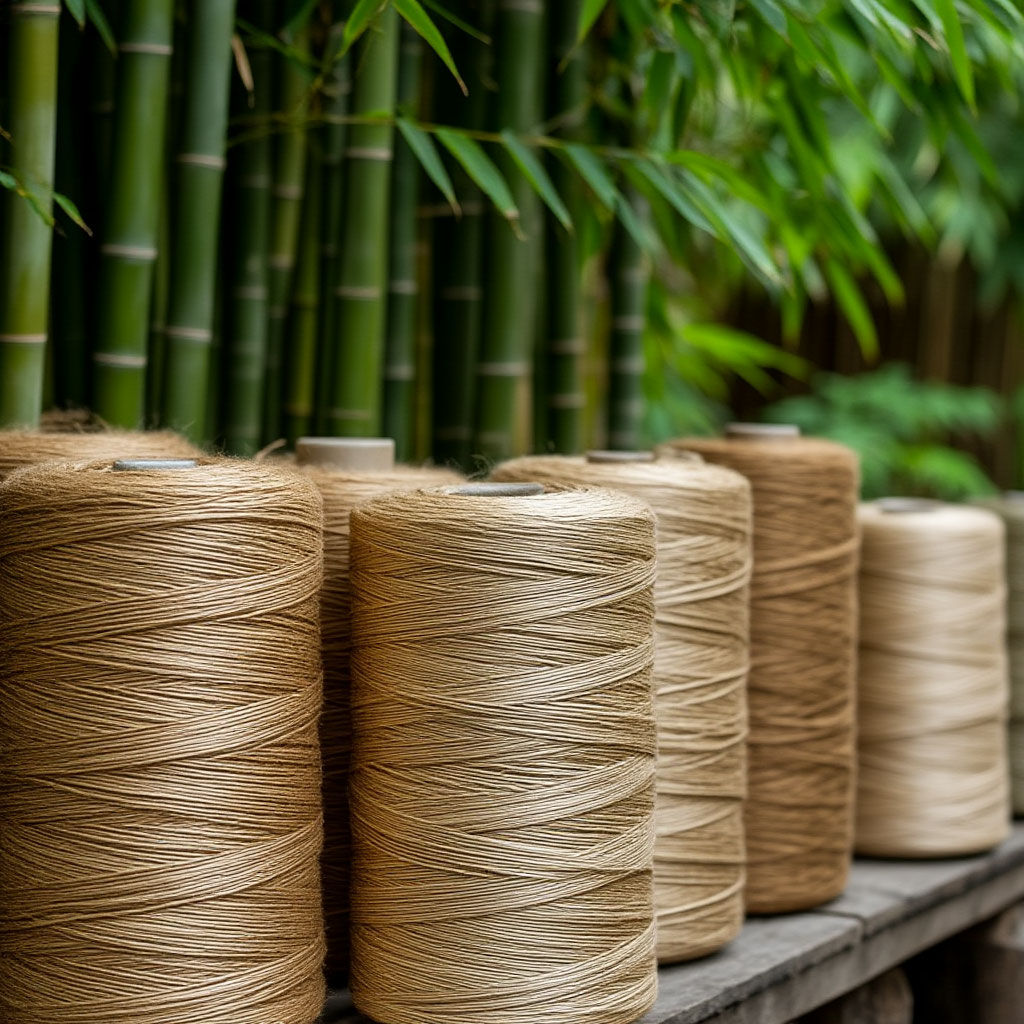
How to Choose Truly Sustainable Yarn
The quest for genuinely sustainable yarn requires moving beyond surface-level claims. For crafters concerned about bamboo fabric sustainability issues, learning to identify truly eco-conscious knitting materials means developing a critical eye for certifications, processing methods, and lifecycle impacts.
Understanding Certifications and Standards
Trustworthy certifications provide concrete answers to questions like is bamboo yarn eco-friendly. The Global Organic Textile Standard (GOTS) represents the highest verification for organic fibers, ensuring environmental and social responsibility at every production stage. OEKO-TEX Standard 100 guarantees textiles are free from harmful substances, while the Forest Stewardship Council (FSC) certification is essential for wood-based fibers like Tencel. For recycled content, the Global Recycled Standard (GRS) offers reliable verification. These certifications cut through greenwashing, giving crafters confidence in their biodegradable yarn options.
The Critical Role of Processing Methods
A fiber’s environmental footprint largely depends on how bamboo is processed into yarn or how alternative materials are manufactured. Water usage, chemical inputs, energy sources, and worker safety protections all determine whether a yarn qualifies as eco-conscious knitting materials. Mechanically processed hemp or linen often has a lower environmental impact than even the best-case scenario for bamboo viscose, proving that not all natural fibers are created equal.
Evaluating Fiber Properties and Practicality
While sustainability is paramount, practical considerations matter too. Durable fibers that create long-lasting garments ultimately have a lower environmental impact. Care requirements also play a role—items needing frequent special washing may consume more resources over time. Climate-appropriate fibers reduce the need for replacements, and low-impact dye processes minimize water pollution. These factors help crafters choose among various biodegradable yarn options with both ethics and practicality in mind.
Conducting a Full Lifecycle Assessment
Truly sustainable choices require examining fibers from growth to decomposition. Growing conditions should promote biodiversity rather than deplete ecosystems. Harvesting methods must protect surrounding environments, while manufacturing processes should prioritize clean production. Performance during use and end-of-life decomposition complete the picture, revealing why some natural fibers outperform others despite initial appearances. This comprehensive approach exposes the bamboo fabric sustainability issues that aren’t visible in the finished skein.
Balancing Budget and Ethics
While some eco-conscious knitting materials carry higher price tags, crafters can maximize value through strategic choices. Versatile fibers suitable for multiple project types offer better long-term value than single-use specialty yarns. Investing in quality that lasts longer ultimately reduces consumption, and supporting small producers helps grow the market for ethical alternatives. Bulk purchases for large projects or fiber swaps with fellow crafters make sustainable choices more accessible.
Identifying and Avoiding Greenwashing
Many brands exploit the demand for biodegradable yarn options with misleading claims. Vague terms like “natural” or “eco-friendly” without certification should raise red flags, as should a lack of transparency about supply chains. Overemphasis on one sustainable aspect while ignoring others creates a distorted picture, and claims that seem too good to be true usually are. Learning these warning signs helps crafters navigate the confusing marketplace of supposed eco-conscious knitting materials.
Building a Sustainable Stash Gradually
Transitioning to ethical fibers doesn’t require discarding existing supplies. A thoughtful approach begins with using current yarn while researching alternatives, then gradually replacing staples with certified sustainable versions. Experimenting with small quantities of new fibers allows for informed decisions, and sharing discoveries with crafting communities spreads awareness. The journey toward more eco-conscious knitting materials is ongoing, with new innovations constantly emerging to help crafters align their hobby with their environmental values.
Below is a clear explanation that answers the question of bamboo yarn’s eco-friendliness. What exactly is bamboo fabric, and why is most of it viscose?
FAQ
Is bamboo yarn safe for baby clothes and sensitive skin?
Yes, with caveats. “Rayon from bamboo” is chemically processed and may retain finishes or dyes that irritate some babies. Pick undyed or OEKO-TEX certified yarns. Wash before wear.
Does bamboo yarn shed microplastics in the wash?
No. It’s regenerated cellulose, not plastic, so fibers aren’t microplastics. It can still shed lint that burdens wastewater systems. Use a wash bag and gentle cycles.
Can I compost bamboo yarn scraps at home?
Sometimes. Undyed, mechanically processed bamboo linen can break down in home compost if cut small and mixed with greens. Viscose blends and dyed scraps belong in trash.
How do I spot “rayon from bamboo” vs real bamboo linen on U.S. labels?
Look for the words “rayon,” “viscose,” or “rayon from bamboo”—that’s the chemical stuff. “Bamboo linen” signals mechanically processed fiber. Favor clear fiber content and certifications. The FTC expects accurate labeling.
Does buying bamboo yarn hurt pandas or cause deforestation?
Usually no for panda food sources, but land-use change for plantations can stress ecosystems. Prefer FSC-certified or fully traceable supply chains. Avoid vague “eco” claims without proof.
The truth about bamboo yarn’s eco-credentials is complex—while the plant grows sustainably, most commercial processing uses harsh chemicals, making bamboo yarn eco-friendly in name only. For truly eco-conscious knitting materials, fibers like organic cotton, hemp, and Tencel offer better transparency and cleaner production methods. These alternatives prove sustainability depends not just on the raw material, but on ethical processing from field to skein.
Choosing responsible yarns means looking beyond marketing claims to examine certifications and manufacturing processes. Whether opting for plant-based or recycled fibers, informed crafters can reduce their environmental impact—one thoughtful stitch at a time. You can now download a bamboo yarn eco-checklist — a practical tool to guide you in choosing yarns that align with both sustainability values and quality craftsmanship.
